Yorkshire’s watermen in the census, 3rd April 1881
Yorkshire's watermen in the census, 3rd April 1881
During the "Covid years" the 1881 census records for Yorkshire were researched to identify and record every waterman plying his trade on the county's canals and rivers. 1881 was chosen as it was just a few years after the start of the compulsory inspection and registration of "canal boats" being any vessel trading cargo on the waterways which was also used as a dwelling. It was going to be interesting to see just how compliant Yorkshire's keel owners had been when faced with unwanted legislation and a charge for inspection and registration. For clarification here are some of the terms which you will find here and elsewhere on our website: Waterman: a person working a vessel on the inland waterways across England. It can be regarded as being synonymous with “boatman” or “canal boatman”. Keelman: a person working on Yorkshire’s waterways whose vessel would usually be referred to as a keel, the type of vessel which predominated in the county at that time. Canal boat: a vessel operating anywhere on the inland waterways across England. Narrowboat: a vessel operating on inland canals and waterways other than in Yorkshire. Keel or Humber keel: a vessel operating on Yorkshire’s waterways often square sail rigged. Sloop: similar to a keel but with a different sail arrangement, so sloop rigged. Lighter: can be regarded as a keel without any cabin accommodation or its own means of propulsion. Barge: The name used by the census authorities for all of the above rather than a term used by the watermen at that time. The results obtained tell us much about the surprising scale of the "river trade" in Yorkshire at that time. They tell us where the watermen and their families could be found at midnight on 3 April 1881 and whether they were afloat or home ashore. We learn about the sizes and ages of their families and where they were born. If onboard a keel we may learn her name, where she was moored, what cargo she was carrying and what route she would usually follow.
Q. What was Yorkshire's "Floating Population" in 1881?
Edward Higgs in Making Sense of the Census Revisited (2005) referred to watermen and their families onboard keels as the "floating population". Analysis of the 1881 census identified 1,026 keels moored across Yorkshire on 3 April 1881.

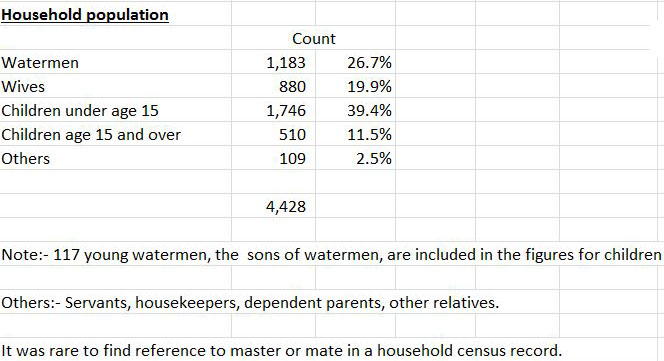
Q. How many watermen were found living ashore that night?
While many keelmen and their families were part of the "floating population", other watermen had chosen to be at home ashore on census night. It was, of course, a Sunday.
Q. Were there any other watermen to be found?
A few watermen were recorded in a variety of institutions across the county. the most being found in the workhouse. This was a time when the elderly, unable to work, with no savings to support themselves or without family to care for them had little option but to sign up as a pauper in their local workhouse.

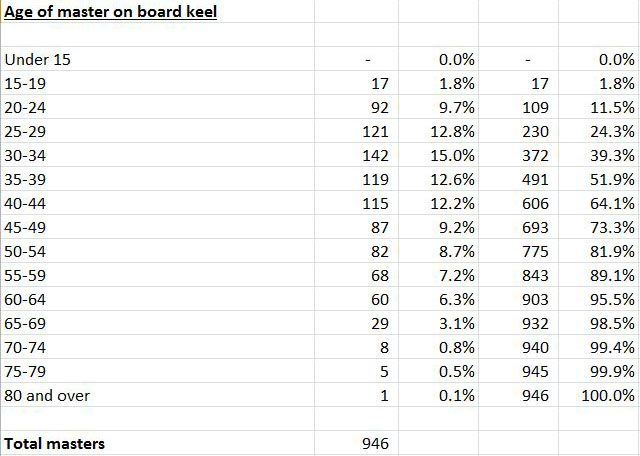
Q. How old was the master of a keel?
By looking at the ages recorded on keel census entries it has been possible to analyse the age found for each master.
It has not been possible to analyse the age for each master found at home as only rarely was a watermen at home identified as "master" or "mate". We can however look at the ages of watermen, regardless of their role in the crew of a keel.
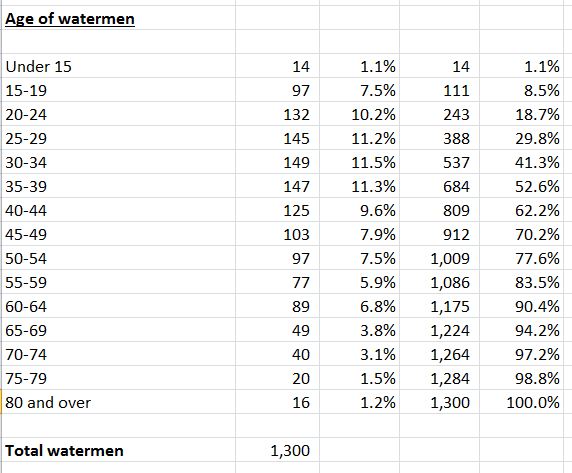
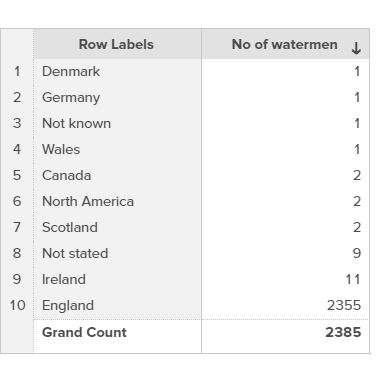
Q. Where were Yorkshire's watermen born?
It would have been easy to speculate on the answer to this question and get it right but this analysis provides the proof. The vast majority of Yorkshire's watermen found in the 1881 census were born in England with over 80% born in Yorkshire. When birthplaces in the neighbouring counties of Lancashire and Lincolnshire are included that proportion rises to 94%.
When the actual place of birth in Yorkshire is analysed, it becomes clear that watermen originated from all across the county but over half of them had been born in one of only nine locations.
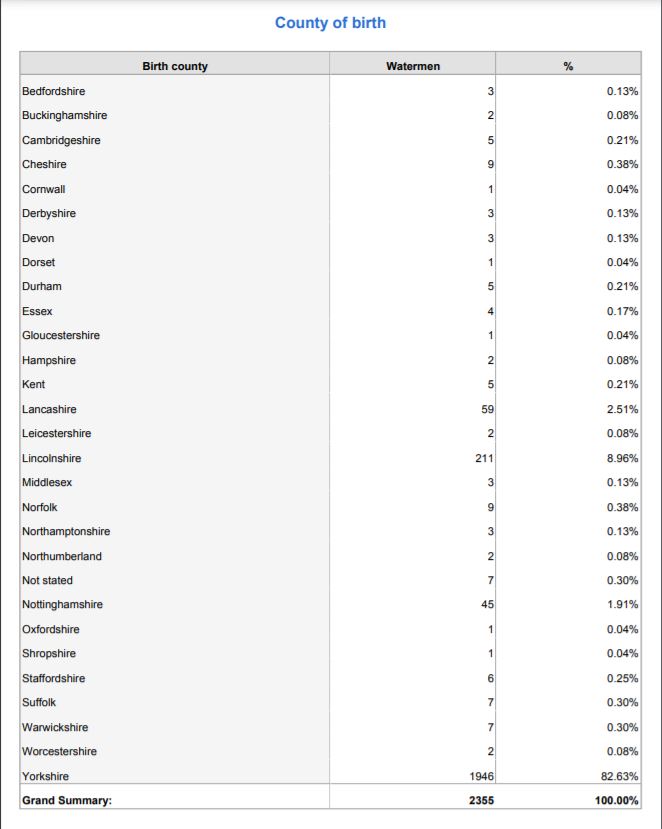

The fact that the top birth locations are all situated on the historic navigable rivers suggests that those watermen were from families that could well have had a connection to the waterways going back in time over many generations.
Q. How many families were living onboard their keels?
The census alone cannot tell us whether the keel was the sole place of residence for a family. Other related research has shown that the numbers of watermen families without a permanent home ashore in Yorkshire was minimal. From the census, it is possible to analyse those vessels supporting a family at the time of the census and gauge the scale of those families.
The statistics suggest that once children had reached an age where they could earn a living ashore, that is where they stayed. Only so many hands were needed to operate a keel and this was not an age where teenagers stayed in bed until noon. The children of working class parents needed to earn to help support the family.
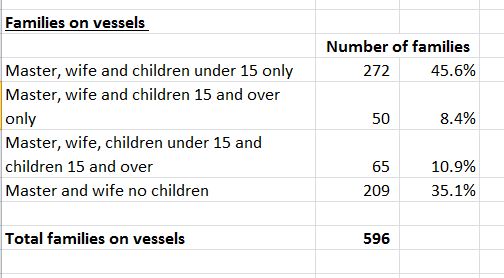
Donate
Your help and donations in keeping the society, it's research and website running are much appreciated!
